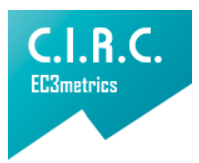Metalinguistic skills in children from 5 to 7 years old.
Habilidades metalingüísticas en niños y niñas de 5 a 7 años
Main Article Content
The goal of this research was to describe the metalinguistic abilities in a group of students between five- and seven-years-old, and to test strategies made to obtain evidence about metalinguistic abilities in children below seven-years-old age. 18 students, 9 girls and 9 boys, from an educative institution in Bogotá, took part in this study. The tasks included two strategies: the first one was a conversational strategy, oriented by a script previously established to obtain metalinguistic comments in children; the second one was a structured protocol with closed questions. Verbal behaviors of the children were videotaped, transcribed and registered in data collection matrixes. Results showed that metalinguistic abilities grow up gradually in their complexity from 5 to 7 yearold children: they develop from some automatic judgments on language that they cannot explain in their answers, through basic language awareness, until to get true reflections on language where they explain linguistic rules in a simple form. The comparison among both strategies (communicative interaction and structured tasks) showed that the conversational strategy wasmore effective to gather metalinguistic abilities data gathering in 5-year-old children, whereas the structured tests strategy showed better data gathering in children older than 6-years-old.
Nevertheless, both strategies are matched and allowed us to corroborate information about the metalinguistic abilities in some specific abilities
Downloads
Publication Facts
Reviewer profiles N/A
Author statements
Indexed in
- Academic society
- Bogotá: Corporación Universitaria Iberoamericana
- Publisher
- Bogotá: Corporación Universitaria Iberoamericana
Article Details
Agudo, Stella; Cardona, Alba & Córdoba, Marcela. (1989). La Conciencia Metalingüística en el Aprendizaje de la Lecto escritura. Bogotá: Sección de Publicaciones - Universidad Nacional de Colombia.
Aguinaga, G.; Armentia, M.; Fraile, A.; Olangua P.; Uris, N.; (1998) PLON Prueba de Lenguaje Oral Navarra, España, Gobierno de Navarra. Departamento de Educación y Cultura. Orientación Psicopedagógica.
Barnes-Holmes, D., Rodríguez, M., & Whelan, R. (2005) La teoría de los marcos relacionales y el análisis experimental del lenguaje y la cognición. Revista Latinoamericana de Psicología, 37, 255-275.
Benveniste, Emile; Chomsky, Noam & Jackobson, Roman. (1969). Problemas del Lenguaje. Buenos aires: Sudamericana.
Bialystok, Ellen. (1986) Factors in the Growth of Linguistic Awareness. En: Child Development. v. 57, p. 498-510.
Bloom & Lahey. (1978). Language Development and Language Disorders. New York: Jhon Willey and sons series on comunication disorders.
Chaney, C. (1992). Language development metalinguistic skills and print awareness in 3-year- old children. Applied Psycholinguistic,13, 485-514.
Chaney, C. (1994). Language development metalinguistic awareness and emergent literacy skills of 3 year-old children in relation to social class. Applied Psycholinguistics, 15,371-394.
Duranti, A. (1997). Antropología Lingüística. Madrid: Cambridge University Press.
Flórez, Rita & Merchan, Clara Inés. (1998). Manual sobre el Desarrollo del Lenguaje- Primera parte. Universidad Nacional de Colombia. Bogota: Universidad Nacional de Colombia. Traducción y síntesis del libro: OWENS.
Flórez, R.; Torrado, M. & Mesa, C. (2006) Emergencia De Las Capacidades Metalingüísticas. Revista Latinoamericana de Psicología. En Prensa.
Karmiloff, A. (1996). Rethinking metalinguistic awareness: representing and accessing knowledge about what counts as a word. Cognition, 58, 197-219.
Karmiloff, K., & Karmiloff-Smith, A. (2001). Pathways to language. Cambridge, MA: Harvard University Press.
Gombert, Jean Emile. (1992). Metalinguistic Development. Chicago: Universidad de Chicago, 238 p.
Lombana, Angélica; Mojica, Andrea; Pardo, Alejandra; Zawady, Megdy. (2000). La Emergencia de las Capacidades Metalingüísticas en relación con el Bilingüismo, tal cual se Evidencian
en la Interacción Comunicativa. Bogota: Trabajo de Investigación. Departamento de Psicología. Universidad Nacional de Colombia. Trabajo no publicado.
Perinat, Adolfo. (1998). Proyecto DGICYT. España: Universidad Autónoma de Barcelona, Facultad de Psicología, Departamento de Psicología de la Educación.
Piaget, Jean. (1987). La Formación del Símbolo en el niño: Imitación, juego, imagen y representación. México: Fondo de cultura Económica.
————. (1984). Psicología del Niño. Madrid: Ed. Morata.
Van Kleeck, Anne. (1994). Metalinguistic Development. En: Language Learning Disabilities in Schools - Age Children and Adolescents: Some principles and applications. WALLACHING BOTLERIK. Allyn and Bacon. United States of America, p. 53-98.
Vygotsky, Lev Semenovich. (1987). Pensamiento y Lenguaje. Buenos Aires: Ed. 1a Pléyade.
————. (1973). Pensamiento y Lenguaje - Teoría del Desarrollo Cultural de las funciones Psíquicas. Buenos Aires: Pléyade.









